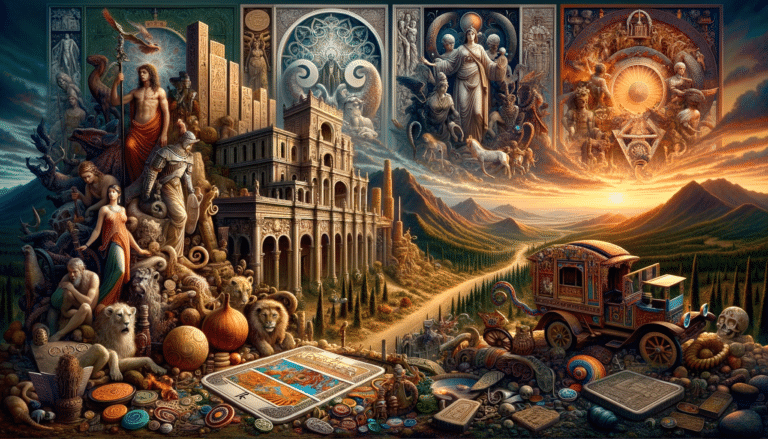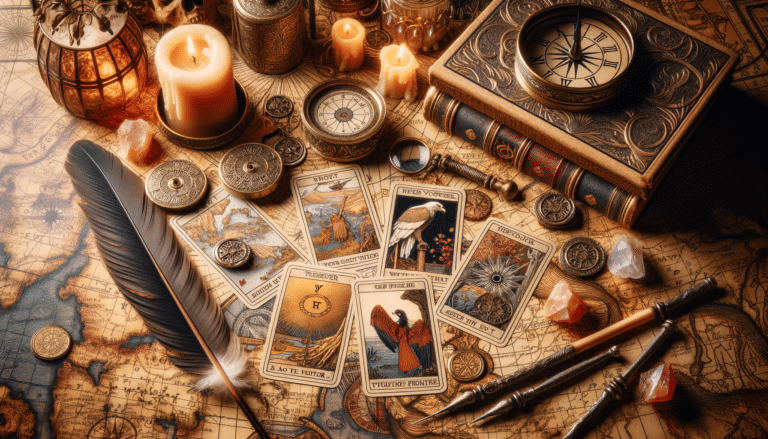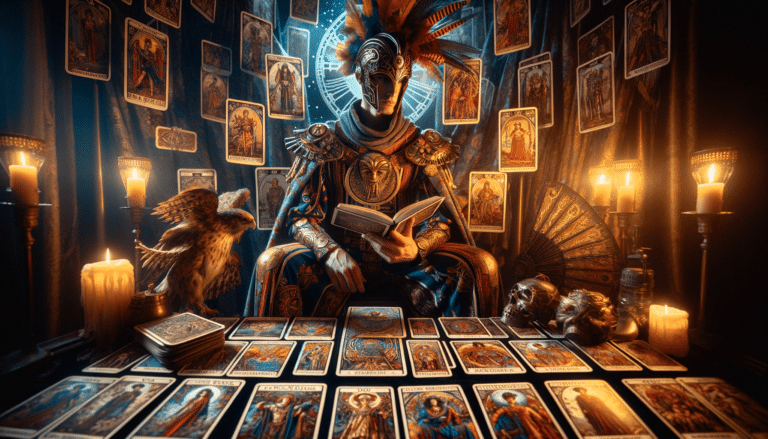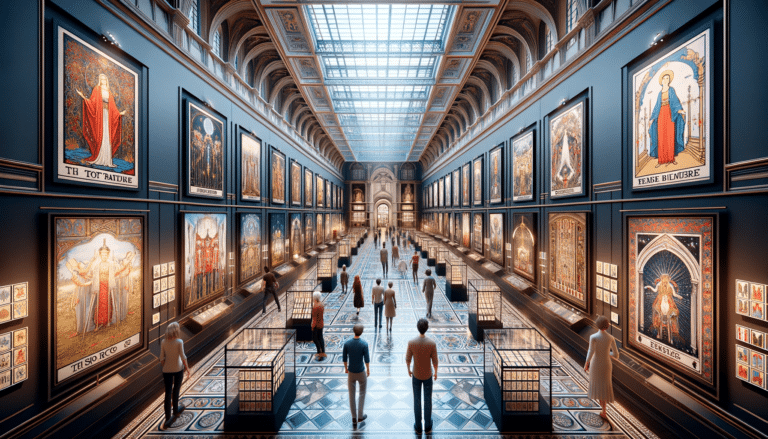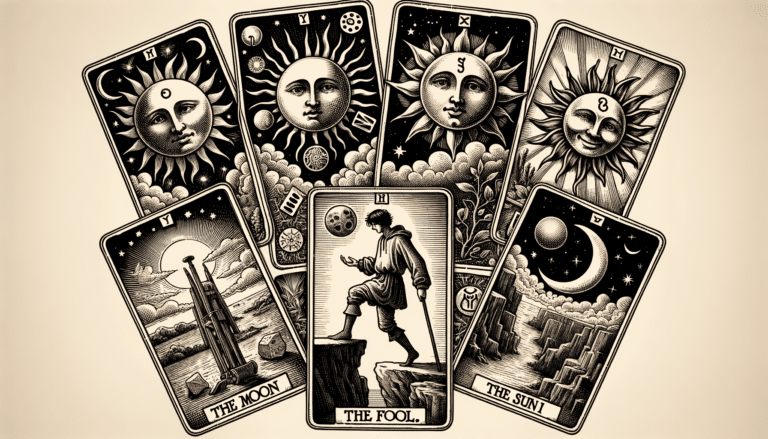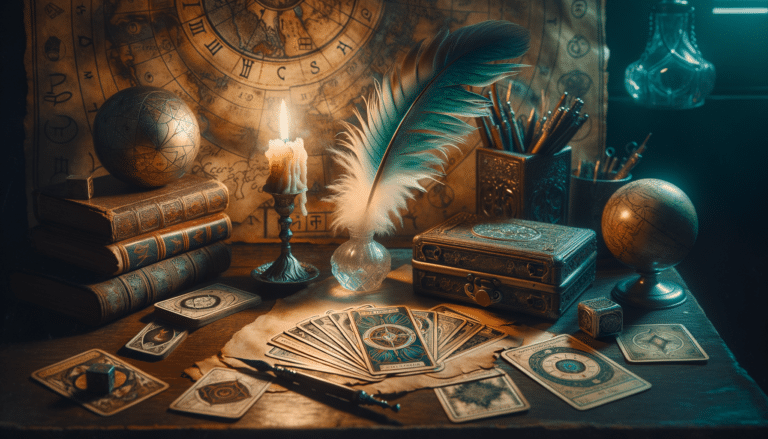Exploring Eight Historical Tarot Decks and Their Meanings
Have you ever wondered where the enigmatic symbols on tarot cards originated?
You’re about to embark on a journey through the rich tapestry of tarot history, uncovering the significance of eight pivotal decks that have shaped divination and art.
From the lavish Visconti-Sforza cards commissioned by Italian nobility to the iconic illustrations of the Rider-Waite deck, each set of cards bears a unique imprint of the era and culture from which it emerged.
You’ll explore how the Marseille Tarot set a standard for tarot imagery, while the Thoth Tarot injected esoteric wisdom into its designs.
Understanding these historical tarot decks and their meanings isn’t just about appreciating their aesthetic; it’s about recognizing their profound influence on spiritual practices and the enduring quest for self-knowledge.
Key Takeaways
- Tarot decks have origins in medieval iconography and Renaissance art, and contain unique symbolic imagery rooted in cultural integration and societal values.
- The Visconti-Sforza tarot deck, commissioned in the mid-15th century, set a high standard for tarot artistry and influenced countless modern decks.
- The Marseille Tarot, originating in the 17th century, became a touchstone for tarot enthusiasts with its bold colors and simplistic yet symbolic imagery.
- The Rider-Waite deck, first published in 1909, introduced pictorial representations and set the standard for what is considered a ‘traditional’ tarot deck today. The deck’s symbolism enhances intuitive interpretation and is widely drawn upon by modern decks.
Origins of Tarot Deck Imagery
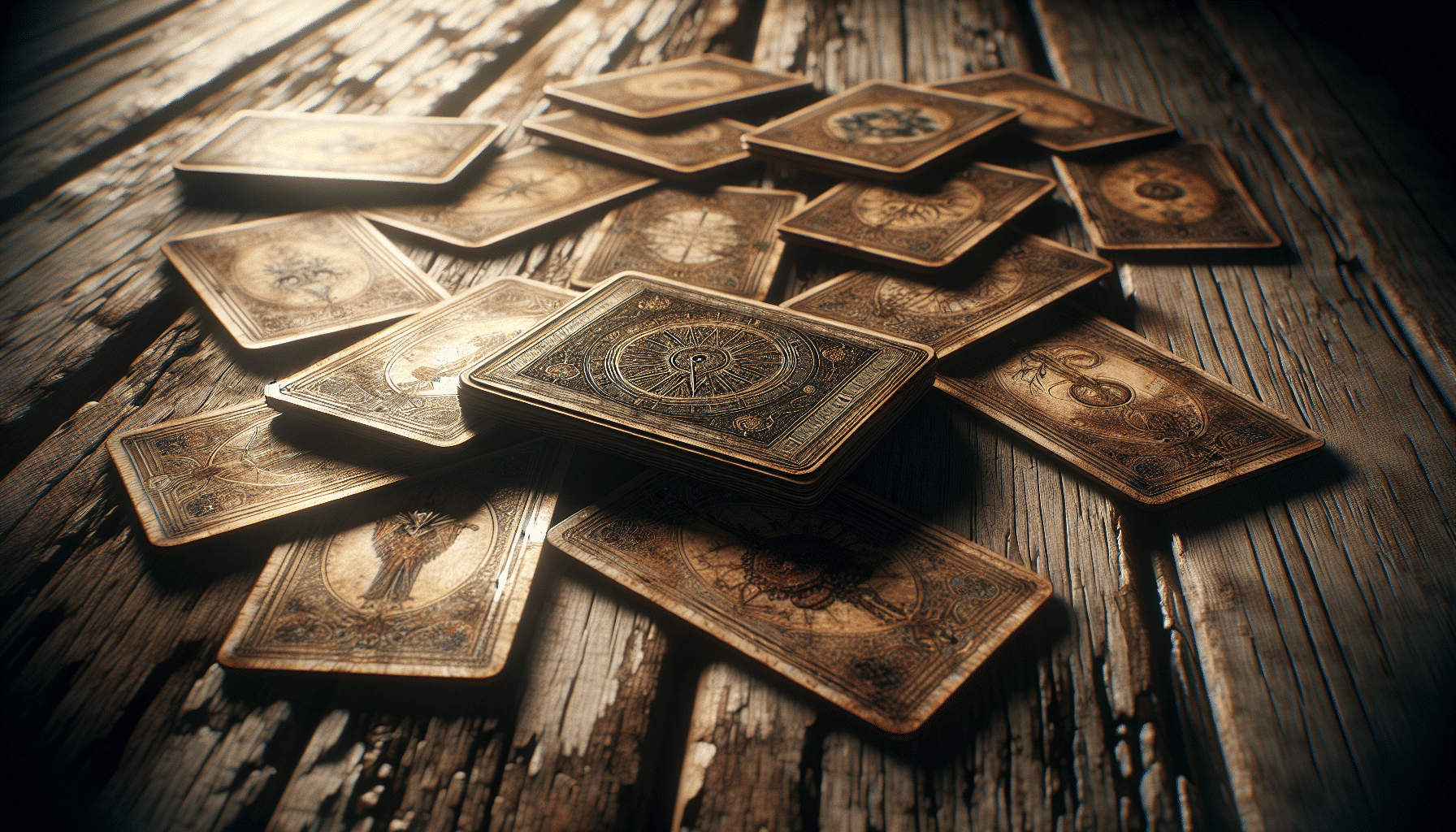
You’ll discover that each of the historic tarot decks contains a unique array of symbolic imagery, deeply rooted in medieval iconography and Renaissance art. These decks aren’t just cards for play; they’re a fusion of philosophy, astrology, and allegory, woven together to reflect the human experience.
The symbolic origins of tarot imagery are as complex as they’re fascinating. They draw from a well of cultural integration, where mysticism meets the material world.
As tarot cards migrated across Europe, they absorbed elements from different societies and belief systems. The iconography in tarot decks often mirrors the societal values and religious beliefs of the time. You’ll see Christian symbolism, astrological associations, and even traces of pagan customs. This melting pot of cultural symbols wasn’t just happenstance; it was a deliberate choice to make the tarot a universal tool for introspection and guidance.
Understanding this imagery requires a look beyond the surface. It’s about recognizing the layers of meaning that each symbol holds. When you do, you’ll begin to see how the tarot functions not only as a reflection of individual consciousness but also as a historical document of collective human culture.
Visconti-Sforza Deck Legacy

How did the Visconti-Sforza tarot deck come to be revered as one of the most significant historical tarot decks, shaping modern interpretations and designs? It’s a tale of meticulous craftsmanship and enduring mystique. Originating in the mid-15th century, this deck was commissioned by the Duke of Milan, and its artwork has profoundly influenced the tarot’s evolution.
As a collectors’ item, the Visconti-Sforza deck has seen numerous deck restoration efforts to preserve its intricate imagery and historical value. These restorations have allowed you to appreciate the deck’s significance, not just as a historical artifact but also as an inspiration for contemporary tarot creators.
Here’s a quick look at the Visconti-Sforza tarot deck’s legacy:
| Impact on Tarot | Explanation |
|---|---|
| Artistic Benchmark | Set a high standard for tarot artistry. |
| Design Inspiration | Influenced countless modern decks. |
| Collectors’ Demand | Remains a sought-after collectors’ item. |
The Visconti-Sforza deck’s legacy is evident in the way it has shaped the tarot landscape. You can see its echoes in many decks you encounter today, ensuring its place in the annals of tarot history. It’s not merely a set of cards; it’s a bridge connecting past and present, guiding the evolution of tarot art and interpretation.
Check out our Tarot Cards & Oracle Decks here…
The Marseille Tarot Evolution
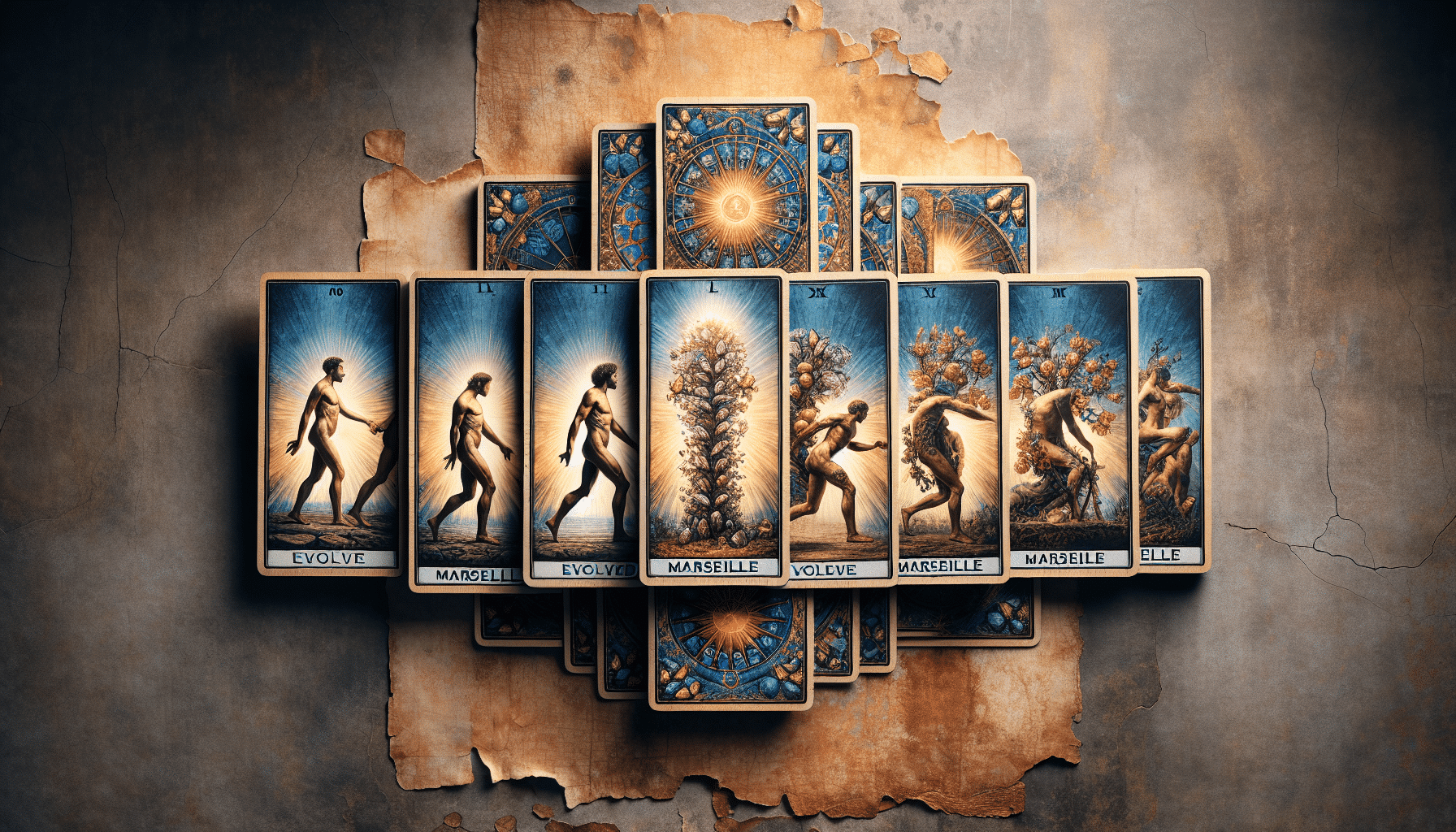
Your understanding of tarot’s heritage deepens when considering the Marseille Tarot’s transformation from a 17th-century pattern to a cornerstone of contemporary practice. Initially, the Marseille Tarot wasn’t a single deck but a standardization of various French patterns. Over time, this amalgamation solidified into a recognized style, profoundly influencing tarot readings and designs.
The Marseille palette, with its bold primary colors and simplistic yet symbolic imagery, is a signature of the deck’s enduring appeal. Crafted with meticulous care, the colors weren’t just for aesthetic – they conveyed specific meanings and connotations that enriched the interpretive value of each card.
Advancements in printing techniques played a significant role in the Marseille Tarot’s evolution. Early decks were hand-painted, making them luxurious and scarce. However, as woodblock printing and, later, engraving became more refined, tarot decks became more accessible. This democratization of the cards allowed a broader audience to engage with tarot, contributing to the widespread popularity of Marseille-inspired decks.
Today, the Marseille Tarot remains a touchstone for tarot enthusiasts and practitioners. Its evolution echoes the broader story of tarot itself: a journey from exclusive art to a widespread tool for divination and reflection.
Learn more with these tarot books here…
Rider-Waite Deck Influence

Often overshadowed by the Marseille Tarot, the Rider-Waite deck has nonetheless reshaped modern tarot with its innovative symbolism and detailed illustrations. You may recognize this deck’s distinct images; they’ve become archetypal within modern divination practices.
The Rider-Waite deck, first published in 1909, was a trailblazer, introducing pictorial representations for all 78 cards, not just the major arcana. This was revolutionary, as it allowed even novices to delve into tarot readings without needing to memorize extensive symbolism.
The imagery, rich with symbolic elements, offers you a visual narrative that enhances intuitive interpretation. This is crucial for your journey into tarot, as it opens the door to a deeper connection with the cards. The Rider-Waite deck’s influence extends beyond just aesthetics; it has shaped the tarot’s development and how it’s used for self-reflection and guidance.
As you explore tarot symbolism, you’ll notice many modern decks draw inspiration from the Rider-Waite’s iconic illustrations. Its pervasive influence has set the standard for what you might consider a ‘traditional’ tarot deck today. For anyone seeking to understand the heart of tarot, grappling with the Rider-Waite deck’s rich symbolism is an essential step. It’s a cornerstone that has firmly established itself in the bedrock of modern divination.
Learn even more secrets of the tarot history here…
Thoth Tarot Mysticism
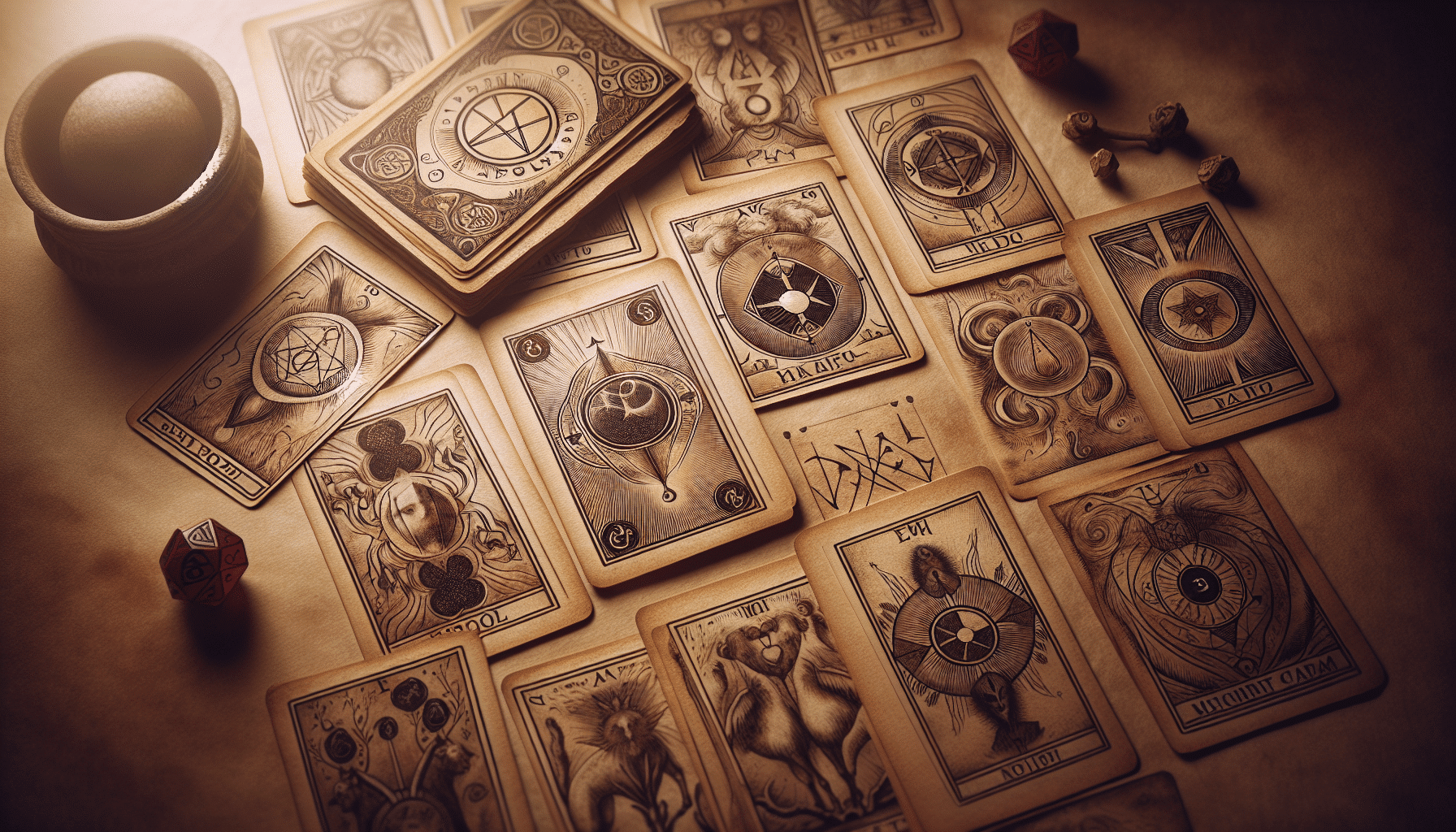
Building on the Rider-Waite deck’s legacy, Aleister Crowley’s Thoth Tarot introduces you to a world where esoteric wisdom and astrological influences intertwine with traditional tarot imagery. Aleister Crowley, a member of the mystical order of the Golden Dawn, infused the Thoth Tarot with a wealth of occult symbolism and knowledge.
The deck diverges from the Rider-Waite in its depiction and interpretation of the cards, embracing a more complex and nuanced approach to tarot. It’s not just a tool for divination; the Thoth Tarot serves as a guide to the mystical path of Thelema, Crowley’s own spiritual philosophy.
To give you a clearer picture, here’s a table that showcases the elements of Thoth Tarot’s mysticism:
| Feature | Description | Significance |
|---|---|---|
| Astrological Correspondences | Each card is linked with planets and zodiac signs | Enhances interpretive depth |
| Kabbalistic Elements | Incorporates the Tree of Life | Bridges tarot and Jewish mysticism |
| Alchemical Symbolism | Uses symbols from alchemy | Represents transformational processes |
| Thelemic Principles | Reflects Crowley’s spiritual laws | Guides users towards self-discovery |
As you delve into the Thoth Tarot, you’ll discover a system rich in symbolism and potential for personal growth. It’s a journey through Crowley’s mystical landscape, where every card reveals a deeper layer of your subconscious and the universe itself.
Conclusion
You’ve journeyed through the tapestry of time, uncovering tarot’s enigmatic soul. From the regal Visconti-Sforza to the revolutionary Rider-Waite, each deck whispered ancient secrets in the language of symbols.
The Thoth Tarot cloaked you in mysticism, while the Marseille’s lineage danced through the ages. These decks, like stars in a cosmic sprawl, guide your quest for understanding.
Embrace their wisdom, and let the cards chart your path to the mysteries within.

About The Author – Allen Hill
Allen Hill, the force behind Unknown Truth Tarot, has a YouTube following 6-times bigger than the population of his hometown, Miamisburg, Ohio. From his spiritually rich blog on Tarot and crystals to his role as CEO of The Unknown Truth Tarot Metaphysical Shop, Allen’s passion for the metaphysical shines through.
A master Tarot reader and “crystal junkie,” Allen is also a devoted dad to Dylan, 10, and Destiny, 24. When he’s not immersed in the world of Tarot and crystals, he enjoys poker and video gaming sessions, often humorously outplayed by Dylan.
Follow Allen on Twitter, Instagram, Facebook, TikTok, and subscribe to his Unknown Truth Tarot YouTube channel to join him on a journey of spiritual growth and self-discovery.

